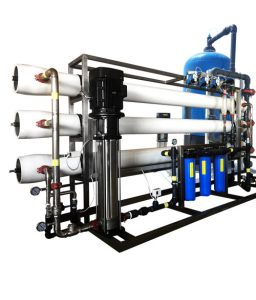Description
Floating Brackish Water Plants
Floating brackish water plants are becoming increasingly popular in the world of aquascaping. These plants are easy to care for and add a unique touch to any aquarium or pond. In this article, we will explore the benefits of floating brackish water plants, the different types available, and how to care for them.
What are Floating Brackish Water Plants?
Floating brackish water plants are aquatic plants that grow in water with a salinity level between freshwater and seawater. They are commonly found in estuaries and mangrove forests, where freshwater meets the ocean. These plants are able to survive in a range of salinities, making them a great addition to aquariums and ponds that have fluctuating salt levels.
Benefits of Floating Brackish Water Plants
There are many benefits to adding floating brackish water plants to your aquarium or pond. Some of these benefits include:
1. Aesthetic Appeal
Floating brackish water plants can add a unique touch to your aquarium or pond. They come in a range of sizes, shapes, and colors, making them a great way to add interest to your aquatic environment.
2. Water Quality Improvement
Floating brackish water plants are great for improving water quality. They absorb excess nutrients from the water, which can help prevent algae growth and keep the water clear.
3. Oxygenation
Floating brackish water plants release oxygen into the water through photosynthesis. This can help improve the overall health of your aquatic environment.
Types of Floating Brackish Water Plants
There are many different types of floating brackish water plants to choose from. Here are some of the most popular:
1. Salvinia
Salvinia is a floating plant that has small, oval-shaped leaves. It is easy to care for and grows quickly, making it a great option for aquariums and ponds.
2. Water Hyacinth
Water hyacinth is a beautiful floating plant that has large, lavender flowers. It is great for improving water quality and adds a pop of color to any aquatic environment.
3. Duckweed
Duckweed is a small, floating plant that is great for aquariums and ponds. It is easy to care for and can help improve water quality.
4. Azolla
Azolla is a floating plant that has small, fern-like leaves. It is a great option for aquariums and ponds, as it can help improve water quality and adds a unique touch to any aquatic environment.
How to Care for Floating Brackish Water Plants
Floating brackish water plants are easy to care for and require minimal maintenance. Here are some tips for caring for these plants:
1. Lighting
Floating brackish water plants require moderate to high lighting. Make sure your aquarium or pond has adequate lighting for the specific type of plant you have.
2. Water Quality
Maintaining good water quality is important for the health of your floating brackish water plants. Test your water regularly and make sure it is within the appropriate salinity level for your specific plant.
3. Nutrients
Floating brackish water plants require nutrients to grow. Consider adding a fertilizer to your aquarium or pond to ensure your plants are getting the nutrients they need.
4. Temperature
Floating brackish water plants prefer a temperature range between 70-85°F. Make sure your aquarium or pond is within this temperature range to ensure the health of your plants.
5. Pruning
Pruning your floating brackish water plants is important to ensure they don’t overgrow and take over your aquarium or pond. Regularly remove any dead or decaying leaves to prevent them from decom
5. Pruning
Pruning your floating brackish water plants is important to ensure they don’t overgrow and take over your aquarium or pond. Regularly remove any dead or decaying leaves to prevent them from decomposing and affecting water quality.
6. Placement
When placing your floating brackish water plants in your aquarium or pond, make sure they have enough space to grow and float freely. Avoid overcrowding your aquatic environment, as this can lead to poor water quality and the growth of unwanted algae.
Conclusion
Floating brackish water plants are a great addition to any aquarium or pond. They offer a unique touch to your aquatic environment and provide many benefits, including water quality improvement and oxygenation. With proper care, these plants can thrive in a range of salinities and add beauty and interest to your aquatic environment.
FAQs
1. Can floating brackish water plants be kept in a freshwater aquarium?
While floating brackish water plants can survive in freshwater, they thrive in water with a salinity level between freshwater and seawater. Keeping them in a freshwater aquarium may cause them to struggle and not reach their full potential.
2. Do floating brackish water plants need to be anchored?
No, floating brackish water plants do not need to be anchored. They naturally float on the surface of the water and obtain nutrients from the surrounding water.
3. Can floating brackish water plants be kept with fish?
Yes, floating brackish water plants can be kept with fish. They provide a natural habitat for fish to hide and spawn, and also improve water quality for fish by absorbing excess nutrients.
4. Can floating brackish water plants survive in cold temperatures?
Floating brackish water plants prefer a temperature range between 70-85°F, but can survive in cooler temperatures as well. However, extremely cold temperatures may cause damage or death to the plant.
5. Can floating brackish water plants be used for phytoremediation?
Yes, floating brackish water plants can be used for phytoremediation. They are able to absorb excess nutrients and pollutants from the water, improving water quality and reducing the impact of human activity on aquatic environments.








Aqua Filter –
Aquaafilter is the best of the best. Their staff is always prompt and courteous, and their service is truly outstanding. Highly recommend!